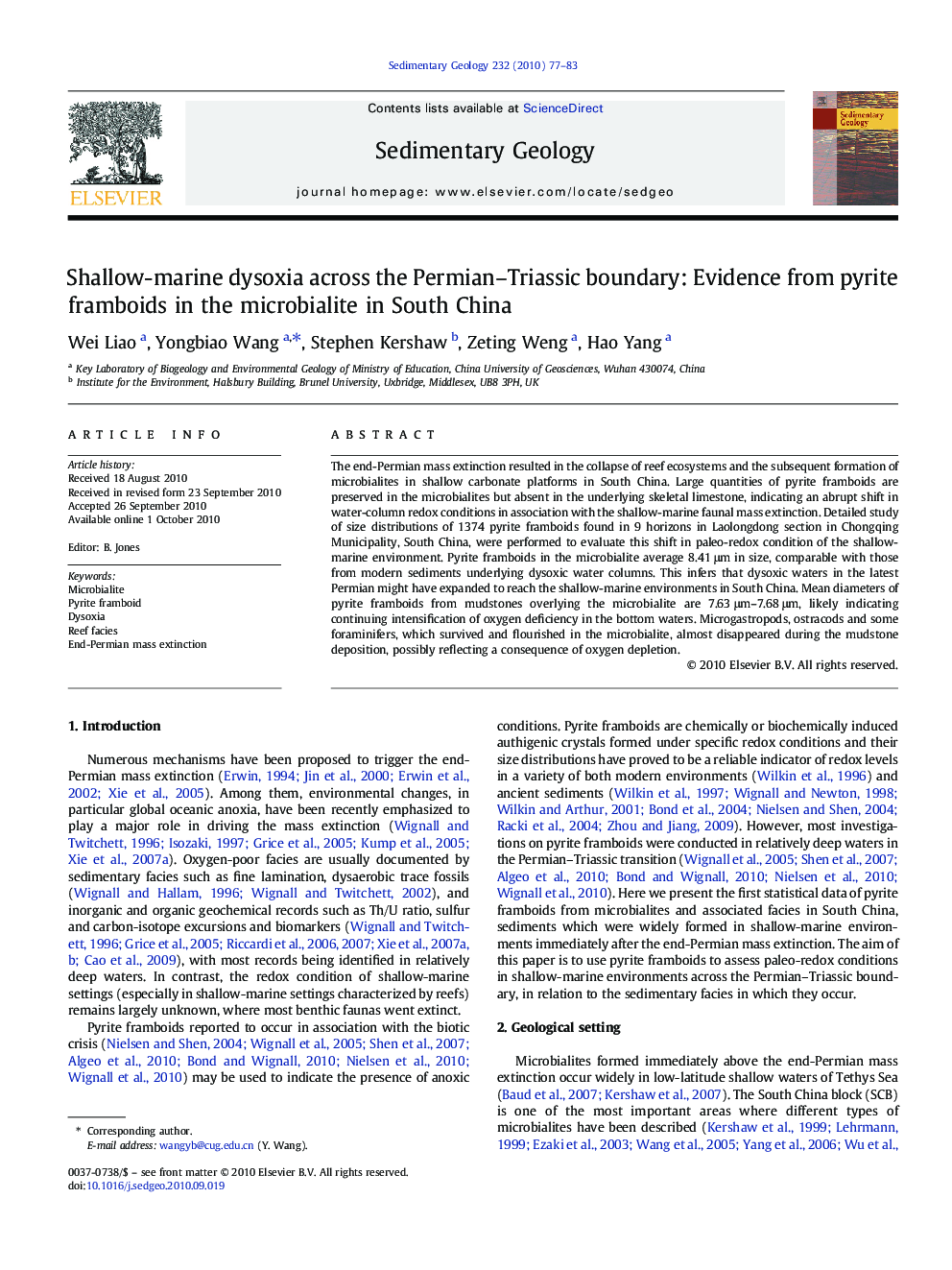| کد مقاله | کد نشریه | سال انتشار | مقاله انگلیسی | نسخه تمام متن |
|---|---|---|---|---|
| 4690110 | 1636117 | 2010 | 7 صفحه PDF | دانلود رایگان |

The end-Permian mass extinction resulted in the collapse of reef ecosystems and the subsequent formation of microbialites in shallow carbonate platforms in South China. Large quantities of pyrite framboids are preserved in the microbialites but absent in the underlying skeletal limestone, indicating an abrupt shift in water-column redox conditions in association with the shallow-marine faunal mass extinction. Detailed study of size distributions of 1374 pyrite framboids found in 9 horizons in Laolongdong section in Chongqing Municipality, South China, were performed to evaluate this shift in paleo-redox condition of the shallow-marine environment. Pyrite framboids in the microbialite average 8.41 μm in size, comparable with those from modern sediments underlying dysoxic water columns. This infers that dysoxic waters in the latest Permian might have expanded to reach the shallow-marine environments in South China. Mean diameters of pyrite framboids from mudstones overlying the microbialite are 7.63 μm–7.68 μm, likely indicating continuing intensification of oxygen deficiency in the bottom waters. Microgastropods, ostracods and some foraminifers, which survived and flourished in the microbialite, almost disappeared during the mudstone deposition, possibly reflecting a consequence of oxygen depletion.
Journal: Sedimentary Geology - Volume 232, Issues 1–2, 1 December 2010, Pages 77–83